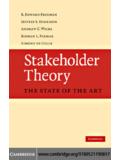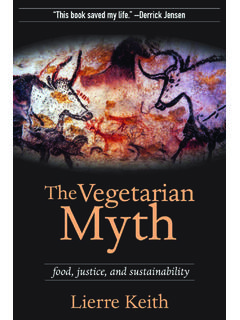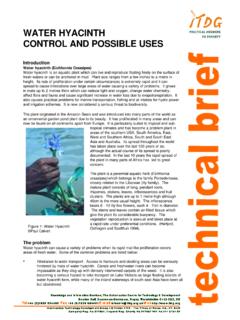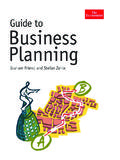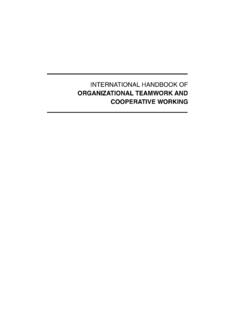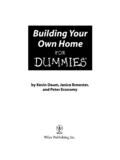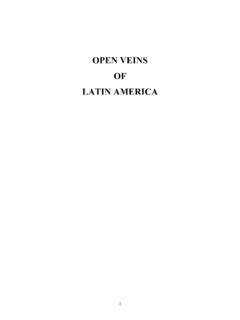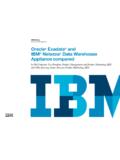Transcription of Understanding the Proof of Business Concept - United Diversity
1 Understanding the Proof of Business Concept Copyright Alan Thompson 2002 Understanding the Proof of Business Concept Prepared By Alan Thompson Murdoch Business School 1 August 2003 Understanding the Proof of Business Concept Copyright Alan Thompson 2002 Contents FEASIBILITY STUDIES VERSUS Business PLANS ..1 Feasibility Studies .. 1 Business Plans.
2 2 DEVELOPING A SMALL Business FEASIBILITY The Business Idea .. 3 Profiles - Key People .. 3 Personal Objectives .. 3 The 4 Your Business Overview .. 4 FUNCTION OF A FEASIBILITY PLAN Proof OF Business Concept 4 Feasibility Plan Narrative .. 4 FEASIBILITY STUDY ( Proof OF Business Concept ) OUTLINE ..5 Executive Summary .. 6 6 Technology .. 6 Market 6 7 Industry .. 7 Business 8 Marketing and Sales Strategy .. 8 Production/Operating 8 Management and Personnel.
3 9 Intellectual 9 Regulations/Environmental Issues .. 10 Critical Risk Factors .. 10 Timing 10 Financial Projections .. 10 Capital Requirements & Strategy .. 11 Final Recommendation .. 11 SOURCES OF HELP ..12 Page 1 Understanding the Proof of Business ConceptCopyright Alan Thompson 2002 FEASIBILITY STUDIES VERSUS Business PLANS Be sure you know what you want and what to expect when pursuing a new venture, Business or project. A lot of time, resources and money can be saved in knowing what to do and the order in which to do it.
4 A good rule of thumb is to never commission a Business plan until a feasibility study has been completed first. A Proof of Business Concept , also known as a feasibility study, is normally less than 20% of the cost of a Business plan and although a feasibility study will not be anywhere close to the in-depth nuts and bolts view of a Business plan, it will do exactly what the name implies. It will show if a project is feasible before any other steps are taken or major financial burden is incurred.
5 There are very big differences between a feasibility study and a Business plan. Feasibility Studies A feasibility study is designed to discover if a Business or project is feasible or if it is not: (In short, does the Business or project warrant further investment of time, money and further study or is it a non-starter). A feasibility study is a relatively inexpensive way to safeguard any wastage of further investment (will it work or won t it). If a project is seen to be feasible from the results of the study, the next logical step is to commission a full Business plan.
6 Will the investment made in the feasibility study itself then be wasted? No. Because the research and information uncovered in the study will be of good use in the Business planning stage and will also reduce the research time and therefore the cost of the Business plan. On the other hand a Business plan is designed to plan in advance how a Business or project will be started, implemented and managed. Business plans are commissioned for one of three reasons: Reorganisation, investment/funding or a management blueprint for operation.
7 People never plan to fail, people only fail to plan! FEASIBILITY STUDIES demonstrate to a prospective project owner or investor that a given Concept is financially viable and whether further study and/or a Business plan is warranted. For a feasibility study, basic data is obtained through a series of queries, questions and meetings, wherein the client provides some of the research and other data and facts need to be gained from a variety of sources. The typical feasibility study contains, among other items, notes on financial projections, a general description of the Business , general details describing how the company / project will be formed, managed and marketed, statements concerning the competition and a cash-flow projection based on averages.
8 Further notes can be included as to general details of the project and revelations found during the research stage. The study will normally be completed quickly and in very general format compared to that of a Business plan. Page 2 Understanding the Proof of Business ConceptCopyright Alan Thompson 2002 A feasibility study should answer five questions. 1. Will it work or not? 2. Is it profitable or not? 3. What will it basically cost to fund or start? 4. Is it worth doing? 5. Is it worth commissioning a Business plan?
9 Business Plans A Business plan is a detailed road map for building a given company. A Business plan contains all that the feasibility study has plus specific time-lines, detailed budgets with forecasts, letters of intent, resumes of staff, background, competition, strengths and weaknesses, work sheets (with full supporting references and notations) and appendices. Appendices should include copies of all documentation in relation to key analyses as well as plans that together represent the road map for company development.
10 A well-written Business plan will show exactly what revenues can be expected and when to expect them, what overheads and expenses will need to be paid and exactly when they will be due. It will also show staffing levels and salaries along with costs of employment, sales levels with monthly and seasonal trends, setup costs, building/office costs, utility and telephone costs, legal, insurance and accounting costs, office furniture and supplies costs and a myriad of other costs and projections.
